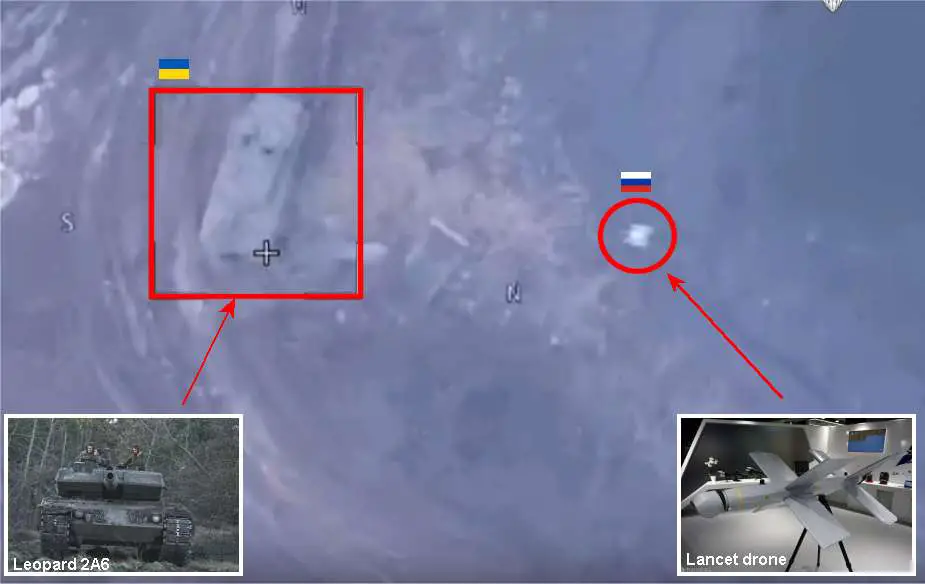Ukrainian Leopard 2A6 Tanks Need Fitting with Cope Cage to Counter Russian Drone Attacks
The Russian Ministry of Defense released a video on January 2, 2024, showcasing an incident where a Ukrainian Leopard 2A6 Main Battle Tank (MBT) was targeted by a Russian Lancet Loitering Munition. The footage, while demonstrating the resilience of the Leopard 2A6's armor which prevented its destruction, showed the vulnerability of modern tanks to drone and loitering ammunition attacks in contemporary combat scenarios.
Follow Army Recognition on Google News at this link

A Ukrainian Leopard 2A6 MBT Main Battle Tank was damaged by Russian Lancet loitering munition. (Picture source Russian MoD footage)
The Leopard 2A6 Main Battle Tank (MBT), renowned for its robust armor protection, suffered only damage in this incident. However, the attack raises questions about the adequacy of current tank defenses against emerging aerial threats, particularly from unmanned systems like drones and loitering munitions. It is noteworthy that, despite these growing threats, the Ukrainian forces have not yet adopted additional protective measures such as cope cages for their tank turrets, a strategy that has been employed by the Russians.
This incident is not isolated in the context of modern warfare. The ongoing conflict in Ukraine has been a rich source of lessons in this regard. One significant development has been the Israeli response to these emerging threats. Learning from Ukrainian experiences, Israel has proactively equipped its fleet of Merkava tanks with cope cages. These cages are designed to provide an extra layer of defense against drone attacks, a critical consideration, especially in urban warfare where the risk from aerial threats is magnified.
The use of drones and loitering munitions in conflicts like those in Ukraine and other parts of the world has highlighted a paradigm shift in military tactics. Traditional heavy armor, while still a formidable defense, is increasingly challenged by the versatility and unpredictability of aerial attack methods. This evolving landscape necessitates a reevaluation of defense strategies for armored vehicles.
Countries and military organizations worldwide are now compelled to innovate and adapt. This involves not just incorporating additional physical defenses like cope cages but also investing in electronic warfare capabilities, detection systems, and rapid response measures to counter the threat from the skies. The incident with the Ukrainian Leopard 2A6 is a stark reminder of the changing nature of warfare and the continuous need for adaptation in military tactics and equipment.
As warfare evolves with technology, so too must the defenses against these new forms of attack. The incident involving the Leopard 2A6 is a clear indication of the need for modern militaries to not only rely on traditional armor but also to integrate comprehensive defense systems that address the full spectrum of modern threats, including those from above.
Defense News January 2024




























